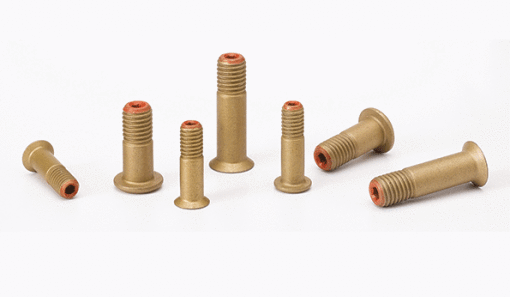 Aerospace fasteners must be secure to prevent pieces from disassembling, strong as to not shear when forces act upon them, yet be lightweight to help reduce aircraft weight and increase efficiency. As a result, many fasteners use lightweight materials like titanium, or have extra security features to prevent them from becoming loose and keep them in place even after losing torque.
Aerospace fasteners must be secure to prevent pieces from disassembling, strong as to not shear when forces act upon them, yet be lightweight to help reduce aircraft weight and increase efficiency. As a result, many fasteners use lightweight materials like titanium, or have extra security features to prevent them from becoming loose and keep them in place even after losing torque.
Aerospace nuts and bolts have been the industry standard, but adhesive alternatives are very popular among aerospace manufacturers because they can provide the same strength and security at virtually no weight impact. According to a recent report from market-research firm Lucintel, aerospace-adhesive usage should increase by 3.4% by 2020.
In attempts to create lighter and more fuel efficient aircraft, aviation companies have turned to materials and adhesives instead of using metal components. Virgin Atlantic Airlines estimates that a one-pound reduction on every aircraft across their fleet would result in fuel savings of 14,000 gallons per year.
Titanium’s popularity stems from the fact that it’s half the weight of medium alloy steel, but retains the same strength. Titanium is also more corrosion-resistant than alloy steel, and in most cases, does not require protective coating. Operating temperature range for titanium is –350 to 800°F.
Alcoa Inc. takes advantage of the material in its Aero-Lite threaded fasteners. Aero-Lite is a lightweight titanium alloy, hex-drive recess pin rated at 95 ksi ultimate shear strength. The fastener is a threaded pin designed for use in a variety of applications from the nose to the tail of aircraft structures. The Aero-Lite pin is typically used on carbon fiber-intensive aircrafts in the wings section. The hex-drive recess in the tail of the pin enables final installation of a nut or collar from one side of the structure, for use on assembly of wing skins and fuselage skins.
The pin has an AL331 close-tolerance flush-head design. Developed jointly with the Boeing Company for use on the 737-700 wing, the pin helps improve the cosmetic of the wing, keeping the surface flat and uniformed, and providing a smooth surface for improved aerodynamics. AL331’s dome-head protrusion gaging system incorporates a precision gage block that locates on the 100-deg. head surface at a gage diameter located on the head angle. A concentric through hole on the gage block is sized to fit the fastener shank to prevent misalignments during gaging. The protrusion is measured from the gage block surface to the top of the head to ensure that top of the fastener is properly flushed.
Thread runout length is one pitch—shorter than the two-pitch runout of conventional threaded pins and even the 1.5-pitch runout of other lightweight threaded systems. The reduced runout length enables an overall shorter pin length, thereby saving weight. Weight savings vary depending on pin diameter, head style, grip length, and other factors, but range from about 7% to 20% compared to other fastening systems. The diameter range of the pin is 5/32 through 7/16 inches.



